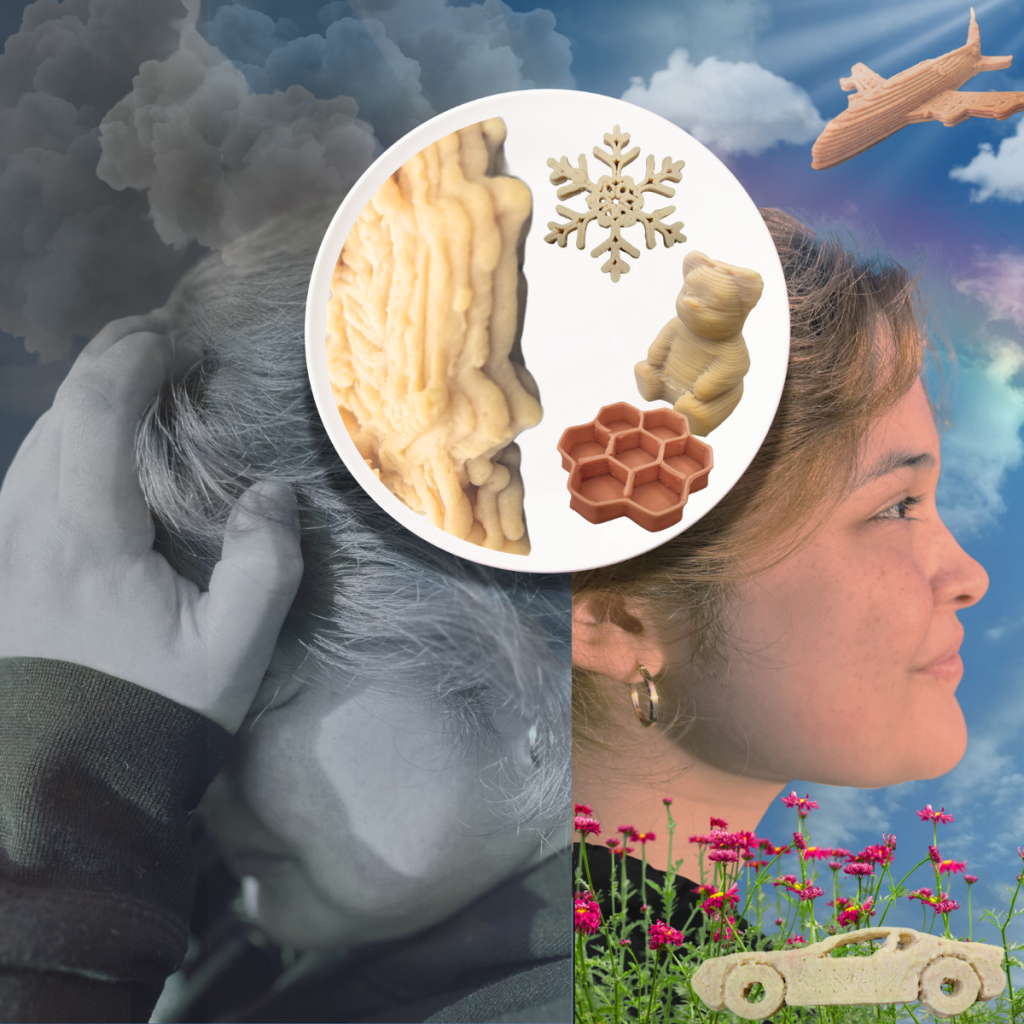Submission 2025
| Submitted by: | Laura Lopez-Aldana |
| Department: | Agricultural, Food + Nutritional Science |
| Faculty: | Agricultural, Life + Environmental Sciences |
Dysphagia, or difficulty swallowing, affects about 1 in 17 Canadians. For those living with it, eating can be stressful and even dangerous. To stay safe, many rely on pureed foods. While these help prevent choking, they often look unappetizing—leading to poor nutrition, less enjoyment, and feelings of isolation.
My research explores 3D food printing as a way to improve meals for people with dysphagia. This technology can create food that’s not only safe to swallow but also visually appealing—bringing joy, dignity, and connection back to mealtimes.
The left side of the image shows a dull, grey world: a stormy sky, and shapeless food—reflecting the emotional weight of traditional texture-modified diets. In contrast, the vibrant right side, with bright skies, flowers, and a hopeful gaze, represents the possibilities unlocked by 3D food printing : A new outlook on life
At the centre, a plate bridges the two worlds. One side shows a bland, undefined meal; the other, playful 3D-printed shapes—a snowflake for personalization, honeycomb for nutrition, a car for independence, and a teddy bear for comfort.
Was your image created using Generative AI?
No.
How was your image created?
This digital composite was created using Canva (Canva.com)by layering several visual elements. Photographs of 3D-printed and pureed food prototypes were captured at the Alberta Food Centre in Leduc and the Food Science Laboratory at the University of Alberta. A model was photographed displaying expressions of sadness and isolation for one part of the image and hopefulness for the other. The background features an image of the Edmonton sky, onto which digital graphics were added. Graphics and effects, including stormy clouds, a dark gradient , bright flowers, and a plate, were sourced from Canva. The various photographic and graphic components were then digitally combined and adjusted to visually represent the contrast between traditional pureed food and the potential of 3D food printing to improve the dining experience.It was quite a culmination to an eventful week in the field.
Where is the image located?
This is a digital composite created using research photographs from the Alberta Food Centre in Leduc, the Food Science Laboratory at the University of Alberta (Edmonton), and stock graphics from Canva (Canva.com).

